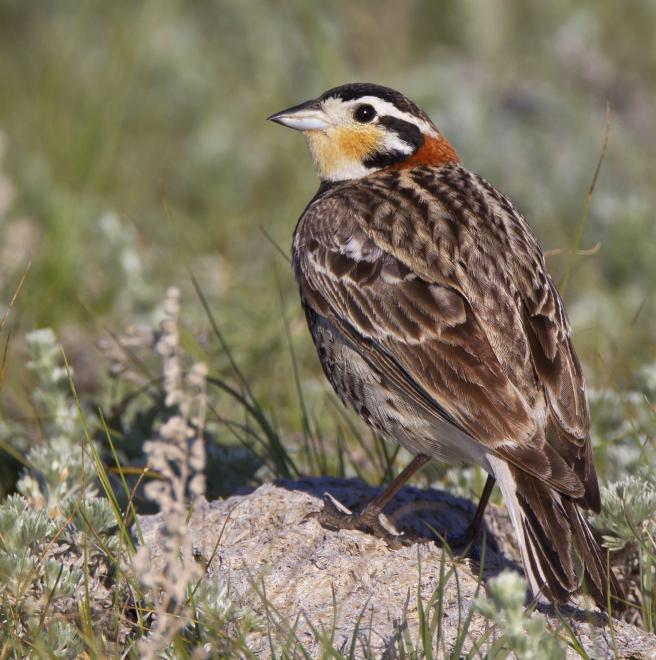

Species that depend on steppe habitat—the transition between desert and wetter, taller grassland—are particularly susceptible to changes in climate. Organisms living on the plains can’t simply move up a mountain to follow suitable climate conditions. The result can be the widespread disappearance of an entire ecosystem. That seems to be partly what’s happening here. While the situation isn’t as dire as that of the Sprague’s pipit, the Chestnut-collared Longspur is projected to have almost three-quarters of its current breeding range become climatically incompatible, and suitable areas are projected to decrease by 40 percent as a whole.
Explore more birds threatened by climate change around the country.





















It's easier than you think to make a difference. Become an Audubon member today to help birds facing climate change.